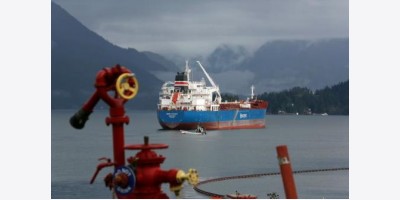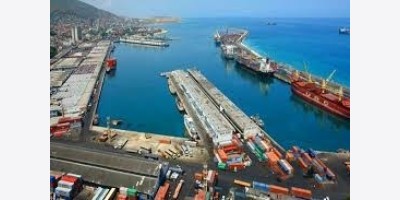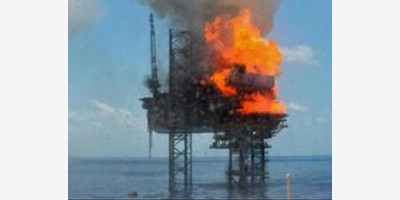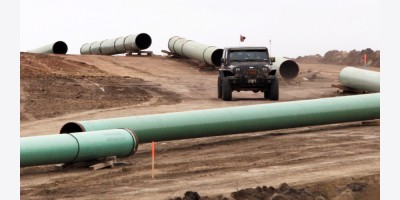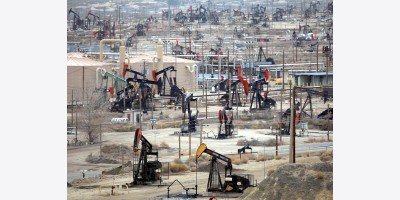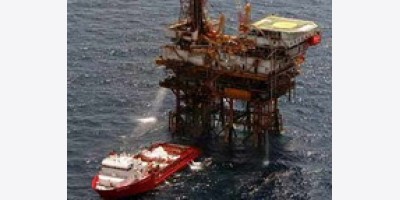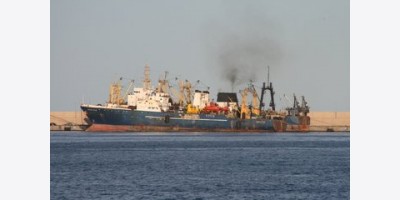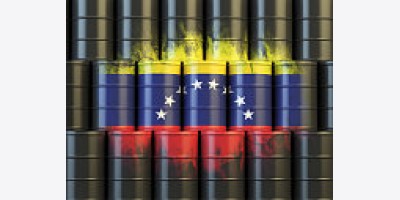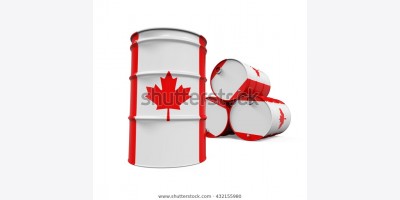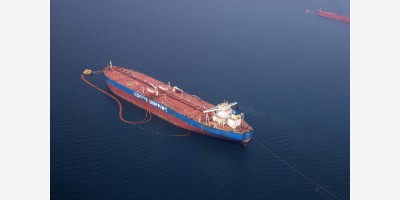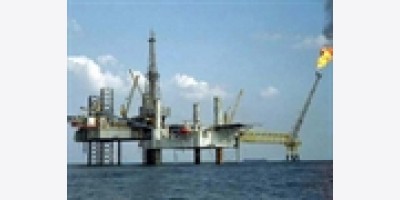By Maher Chmaytelli Jun 29, 2014 9:41 PM GMT+0700
Libya’s largest oil-export terminal, the port of Es Sider, may re-open in August after the North African nation’s new parliament takes office, said a spokesman of the rebel group that shut the facility almost a year ago.
“It’s possible to solve all issues and get to an agreement to re-open Es Sider and Ras Lanuf when the new parliament starts working, God willing, after Ramadan,” Ali Al-Hassy, a spokesman of the Executive Office for Barqa, said by phone from eastern Libya.
Ras Lanuf is the second of two ports still under control of the Barqa rebels. The Muslim fasting month of Ramadan started today in Libya and will finish with the Eid El Fitr holiday at the end of July.
The rebels’ Executive Office for Barqa seeks self-rule for the region known also as Cyrenaica. It occupied oil ports in eastern Libya at the end of last July, demanding an oil-revenue sharing agreement to make up for the neglect the area experienced under Muammar Qaddafi’s 42-year rule.
Libya, with Africa’s largest oil reserves, is now producing about 300,000 barrels a day, or a fifth of its output before Qaddafi was overthrown in 2011. The loss of the country’s oil production has boosted the price of Brent, a benchmark for half the world’s traded crude.
Comprehensive Deal
Under an agreement reached on April 6, the Barqa federalists handed over control of Zueitina and Hariga, two of the four oil ports they seized a year ago. In return, they received an amnesty and the payment of salaries for defectors from Libya’s Petroleum Facilities Guard who joined the rebels.
The accord calls for a second round of talks aiming at a comprehensive deal that would allow the re-opening of the two remaining ports, Es Sider and Ras Lanuf.
The Barqa federalists last month threatened to cancel the April agreement in protest over the appointment as prime minister of Ahmed Maiteg, whom they see as allied with the nation’s Islamists. His appointment was later withdrawn, and elections were held last week for a new parliament.
Danske Bank (DANSKE) on June 19 raised its third-quarter forecast for Brent crude to $107 a barrel, from $104, on the turmoil in Iraq and the protests at oil sites in Libya. “We expect the oil price to stay in the $108-114 a barrel range over coming months, as it will take some definitive progress in Iran and Libya for the oil price to break below this range,” it said.
To contact the reporter on this story: Maher Chmaytelli in Dubai at mchmaytelli@bloomberg.net
To contact the editors responsible for this story: Alaric Nightingale at anightingal1@bloomberg.net Bruce Stanley, Alex Devine
By Mark Shenk Jun 30, 2014 6:01 AM GMT+0700
Speculators boosted bets that gasoline prices will rise on prospects for the most Independence Day traffic in seven years and fighting in the Middle East.
Money managers increased net-long positions by 7.6 percent in the week ended June 24, U.S. Commodity Futures Trading Commission data show. Long positions advanced 5.5 percent and shorts fell 0.3 percent.
Americans traveling by car over the July 4th weekend will pay the most for fuel since 2008, AAA said last week. Pump prices are at the highest level for the period in six years, data from the motoring organization show. Gasoline advanced with crude this month after insurgents captured the northern Iraqi city of Mosul and advanced toward Baghdad.
“The gasoline market is relatively strong,” Tim Evans, an energy analyst at Citi Futures Perspective in New York, said by phone on June 27. “There’s anticipation of strong demand over the July 4 weekend and during July and August as a whole.”
Gasoline gained 1.1 percent to $3.1258 a gallon on the New York Mercantile Exchange in the period covered by the CFTC report and is up 11 percent for the year, the best performing energy future in the S&P GSCI Commodity Index. It advanced 1.32 cents, or 0.4 percent, to settle at $3.0988 on June 27.
Pump Prices
Regular gasoline at the pump, averaged nationwide, rose to $3.684 a gallon June 25, the highest since April 30, according to Heathrow, Florida-based AAA, the largest U.S. motoring group.
About 34.8 million people plan to drive 50 miles or more from home during the five days ending July 6, up from 34.1 million last year and the most since 2007. U.S. motor-fuel demand peaks in the vacation season that stretches from Memorial Day in late May to Labor Day in early September.
Gasoline demand over the four weeks ended June 29 averaged 8.95 million barrels a day, 1.7 percent more than a year earlier, according to the Energy Information Administration. Consumption peaked at 9.64 million barrels a day in July 2007, monthly data shows. Consumption tumbled during the recession that started in December 2007, the worst slump since the Great Depression.
“Gasoline demand is growing again,” Evans said. “We’ve not quickly reverted to our pre-recession behavior. The increased fuel efficiency standards and higher mileage mean that we may never reach those levels.”
11-Month High
Gasoline futures reached an 11-month high on June 23 as the fighters of the Islamic State in Iraq and the Levant, known as ISIL, moved closer to Baghdad. Prices retreated after Iraqi Oil Minister Abdul Kareem al-Luaibi said output wasn’t affected by the fighting and the country planned to increase crude exports next month from about 2.5 million barrels a day in June.
Hedge funds and other money managers increased net-long positions in gasoline by 4,678 futures and options to 66,588, the highest since the week ended May 6, the CFTC said. Long positions rose by 4,601 to 88,962.
“There’s speculation that there will be a significant upswing in gasoline prices,” John Kilduff, a partner at Again Capital LLC, a New York-based hedge fund that focuses on energy, said by phone on June 27. “We should see greater demand over the July 4 holiday.”
In other markets, net-long positions in benchmark West Texas Intermediate fell by 3.1 percent to 345,283. Net longs slipped by 11,053 to 345,283 futures and options. Long positions fell 3 percent, while shorts declined 0.6 percent. WTI dropped 0.3 percent to $106.03 in the report week.
Diesel Fuel
Bullish wagers on ultra low sulfur diesel climbed 49 percent to 40,381 contracts, the highest level since March. The fuel rose 0.8 percent to $3.0416 a gallon in the week.
Net longs on U.S. natural gas fell 4.7 percent to 300,193, the least since December. The measure includes an index of four contracts adjusted to futures equivalents: Nymex natural gas futures, Nymex Henry Hub Swap Futures, Nymex ClearPort Henry Hub Penultimate Swaps and the ICE Future. Nymex natural gas dropped 3.7 percent to $4.535 per million British thermal units during the report week.
Gasoline inventories rose 710,000 barrels to 215 million in the week ended June 20, the fourth straight gain, EIA data show. Supplies of crude oil and distillate fuel, a category that includes heating oil and diesel, also climbed, according to the Energy Department’s statistical arm.
“The gasoline show is mostly over,” Michael Lynch, president of Strategic Energy & Economic Research in Winchester, Massachusetts, said by phone on June 27. “Once we get into late July, attention shifts unless a hurricane disrupts output. Supplies are rising and we should see imports arrive from Europe.”
To contact the reporter on this story: Mark Shenk in New York at mshenk1@bloomberg.net
To contact the editors responsible for this story: Dan Stets at dstets@bloomberg.net Bill Banker
By Dan Murtaugh and Zain Shauk Jun 28, 2014 11:00 AM GMT+0700
As many as 500,000 barrels of light oil a day may be eligible for export under a new government classification, helping to soak up surging U.S. shale oil production.
Pioneer Natural Resources Ltd. (PXD) and Enterprise Products Partners LP (EPD) said this week that the Commerce Department approved their plans to export some ultra-light crude, known as condensate, heated in stabilizers and distillation towers. Stabilization is far less complex than the processing of oil at refineries or at condensate splitters, which separate several gases and other products from crude.
Significant oil exports would help relieve a glut of oil on the Gulf Coast, where inventories rose to record levels this spring as production reached the highest since 1986. That could narrow the discount for U.S. oil relative to the rest of the world, weakening an advantage that U.S. refiners have enjoyed since 2011.
“Condensate exports could narrow the gap between U.S. and international refining margins,” Warren Russell, a New York-based analyst for Barclays PLC, said yesterday in a research note.
U.S. benchmark West Texas Intermediate crude has averaged a $7.96 a barrel discount to European Brent crude, the international marker.
Stabilizing Capacity
There may be more than 1 million barrels a day of condensate-stabilizing capacity in U.S. oil fields, said Jeff Stake, director of sales for Odessa, Texas-based Allied Equipment Inc. Allied has manufactured and sold stabilizers that can process about 200,000 barrels a day, Stake said.
More than 90 percent of condensate that moves through stabilizers is processed in adjacent distillation towers, said Bill Bowers, vice president of production equipment for Houston-based Valerus, which manufactures and installs the systems.
Crude oil that has been processed through a distillation tower, resulting in petroleum products, is no longer crude and can be exported without a license, Jim Hock, a Commerce Department spokesman, said June 24 in a written statement. The U.S. prohibits most exports of unprocessed crude.
Stabilizers, which are located at gathering facilities in production fields, boil off the most volatile compounds, leaving behind ultra-light oil that is safe to transport or store. Some volume is lost in the process. About 500,000 barrels a day of crude is churned out from stabilizers and distillation towers daily, Stake said.
Individual units can handle from 500 barrels a day to 50,000, said Nader Khaki, director of sales and engineering for SouthTex Treaters Inc. SouthTex has sold 500,000 barrels a day of total stabilizing capacity, including at least one unit to a producer in Colombia, Khaki said.
Different Distributions
Crude oil is a complex mixture of different kinds of hydrocarbons that, when heated, separate into a gas at different temperatures.
“It’s everything from small particles like ethane and propane to more viscous material that will eventually be made into asphalt,” said Dennis Sutton, president of the Crude Oil Quality Association. “The difference is just in the distribution.”
Theoretically, any kind of oil could be passed through a stabilizer, said Bowers of Valerus. Lighter crudes processed in stabilizers with distillation equipment can produce gases at lower temperatures, while heavier oils moved through the same systems may result in much less gas, Bowers said.
Heavier Oil
If the Commerce Department requires significant amounts of light products to be removed, heavier oil would need temperatures more than twice as high to generate those products, Bowers said. “It’s probably not going to be economic and before long you’re spending so much that you might as well refine it.”
About 750,000 barrels of condensate are produced from U.S. shale plays daily, said Michael Wojciechowski, head of Americas downstream research for Wood Mackenzie Ltd. The U.S. will produce about 650,000 barrels a day this year of the lightest classification of crude oil, the Energy Information Administration estimated in a May report.
U.S. crude production has boomed in recent years, spurred by horizontal drilling and hydraulic fracturing in shale plays. Output has risen 46 percent since the start of 2012 to nearly 8.5 million barrels a day.
Stabilizing is widespread in several shale plays, including the Williston Basin in North Dakota, the Permian in West Texas and the Utica in Ohio, Stake said. It’s most prevalent in the Eagle Ford, home to some of the lightest crude in the U.S.
“The new light hydrocarbons that come from all of the shale production, for the most part those are candidates for needing stabilization,” Bowers said.
To contact the reporters on this story: Dan Murtaugh in Houston at dmurtaugh@bloomberg.net; Zain Shauk in Houston at zshauk@bloomberg.net
To contact the editors responsible for this story: David Marino at dmarino4@bloomberg.net; Susan Warren at susanwarren@bloomberg.net Bill Banker
By Dan Murtaugh Jun 28, 2014 12:26 AM GMT+0700
Rigs targeting oil and natural gas in the U.S. rose by 15 this week to 1,873, according to Baker Hughes Inc. (BHI)
Oil rigs rose by 13 to 1,558, data posted on the company’s website show. The gas count increased by 3 to 314, the Houston-based field services company said.
Pioneer Natural Resources Ltd. and Enterprise Products Partners LP (EPD) said the U.S. Commerce Department gave them approval to export ultra-light crude processed at gathering facilities in the fields of south Texas. The decision could lead to more drilling in wet gas plays, Vienna-based JBC Energy said yesterday in a research note.
“Since the source for these types of liquids would be gas wells with high liquid components, Tuesday’s decision might result in increased investment in gas production,” JBC Energy said.
U.S. oil production fell by 31,000 barrels a day, or 0.4 percent, in the week ended June 20 to 8.45 million, the Energy Information Administration said. Oil supplies grew 1.74 million barrels, or 0.5 percent, to 388.1 million.
West Texas Intermediate crude for August delivery fell to $105.70 a barrel at 1:10 p.m. on the New York Mercantile Exchange. Prices have climbed 7.4 percent this year.
U.S. gas stockpiles rose 110 billion cubic feet last week to 1.829 trillion, the EIA data said. Supplies were 31 percent below the five-year average.
Natural gas for August delivery fell to $4.396 per million British thermal units on the Nymex and has risen 3.9 percent this year.
To contact the reporter on this story: Dan Murtaugh in Houston at dmurtaugh@bloomberg.net
To contact the editors responsible for this story: David Marino at dmarino4@bloomberg.net Bill Banker
TEHRAN (FNA)- Iran has found new oil and gas fields in Western and Northeastern parts of the country, Managing Director of the National Iranian Oil Company Rokneddin Javadi announced on Sunday.
"The initial studies indicate new oil and gas discoveries in Iran," Javadi said on Sunday.
He underlined that further studies should be carried out before an official announcement can be made about details of the new hydrocarbon reserve finds.
Earlier this year, Iranian Oil Minister Bijan Namdar Zanganeh had mentioned the possibility of discovering new oil and gas fields in Western and Northwestern parts of the country, but said, "The discovery operations in these regions are not yet at a stage to make an official announcement about the results."
Zanganeh pointed to new signs for oil and gas resources in Golestan, Khorassan Razavi and North Khorassan provinces as well as border regions like Qasr Shirin.
A recent report by the Iranian oil ministry's explorations department in the first three years of the Fifth Development Plan witnessed 95 percent growth.
Iran also sits atop one of the world’s largest natural gas reserves of over 33 trillion cubic meters and, in the near future, the country is set to increase it gas processing and transfer capacity to one billion cubic meters per day from the current level of 600 million cubic meters per day.
Fars News Agency (FNA)
TEHRAN (FNA)- Crude production capacity of West Karoun Oilfields is scheduled to reach 1.4 million barrel per day (mb/d) by 2021, the National Iranian Oil Company (NIOC) announced.
The oilfield, which is located in the oil-rich West Karoun region in Southwestern Iran, is currently producing 300,000 b/d, the oil ministry's website reported.
Meantime, gas production from these fields is expected to rise up to 1 billion cubic feet per day (bcf/d) in 2021. The gas is scheduled to feed refineries, petrochemical plants, and will be injected into oilfields.
According to national economic plan, the West Karoun fields are expected to produce 550,000 b/d of oil and 335 mcf/d of rich gas in three years.
Development of West Karoun fields is estimated to earn the country $21.5bln a year.
Fars News Agency (FNA)
(Reuters) / 29 June 2014
The official said Kerry believed the Saudi official’s comments were “constructive.”
US Secretary of State John Kerry and the Custodian of the Two Holy Mosques, King Abdullah bin Abdulaziz of Saudi Arabia, briefly discussed global oil supplies during a meeting on the crisis in Iraq on Friday, a senior US State Department official said.
During the talks, Kerry referred to recent comments by a Saudi oil official that the world’s largest oil producer would increase supplies should crises in Iraq or Syria disrupt supplies, the official said.
“The secretary noted positively a recent statement from an oil official in the kingdom reflecting the kingdom’s desire to do what will be required in the event of any turbulence,” said the State Department official, who briefed reporters on the talks.
The official said Kerry believed the Saudi official’s comments were “constructive.” US officials have expressed the belief that concerns in oil markets will ease once a more inclusive government is formed in Baghdad that can deal with an insurgency threatening to break apart Iraq.
Brent crude oil was little changed in trading on Friday following one of the international benchmark’s biggest weekly falls this year due to reduced concerns over exports from Iraq.
Prices have dropped more than $2 from a nine-month high of $115.71 hit on June 19 as output from Iraq’s southern oilfields remained unaffected by fighting in the north and west.
North Sea Contracts for Difference, used to hedge the spread between the prompt Dated Brent market and further out Cash BFOE contracts, have entered deeper contango on the prompt, with several traders saying this is necessary to allow a prompt glut of sweet crude to clear.
The discount of the first week to second week CFD (currently June 30-July 4 versus July 7-11) dropped to minus $0.26/b on Thursday, its lowest since June 4. The discount of the second week CFD versus third week (July 7-11 versus 14-18) dropped to minus $0.24/b, the lowest since May 28.
Traders said that as well as weakening differentials of various crude grades to Dated Brent, the structure of Dated Brent had needed to go lower at the prompt to encourage buying of crudes related to the key benchmark for European and African grades.
“All the crudes except for in the US are weak,” said one trader Thursday. Even some June-loading North Sea barrels were reportedly available this week, at a time when usually they would have long sold out.
Northwest Europe has faced stiff competition on differentials from a large overhang of July-loading West African cargoes, said traders. Low run rates at European refineries have also contributed to the lower selling prices, said traders. CFDs are used to give a weekly value to Dated Brent in the future, versus the monthly Cash BFOE contracts, which themselves are closely linked to futures contracts.
As such, cheaper CFDs mean that Dated Brent itself is cheaper versus the more commonly-traded futures market. Especially with futures flat price elevated by Iraq-related risk over the past two weeks, traders said Dated Brent had to come off to encourage buying of physical grades related to it.
Venezuela’s state-owned PDVSA reported declines in its 2013 production and exports from 2012, the company said Friday. “We have a policy of rational use of our resources, in defense of oil prices, for strengthening of OPEC and against flooding the international market,” said Rafael Ramirez, who is PDVSA’s president and Venezuela’s energy minister, when presenting a company operations and financial report.
PDVSA pumped an average 2.9 million b/d of crude, plus another 117,000 b/d of natural gas liquids, in 2013, for total average output of 3.015 million boe/d, Ramirez said. The 2012 average was 3.034 million boe/d. “2013 has been the most difficult year for the death of President Hugo Chavez and the country’s economic and political problems,” Ramirez said.
The output fell far short of targets put forth by Ramirez in May 2013, when he said the goal for 2013 was 3.32 million boe/d. He also predicted PDVSA would produce an average 4 million boe/d in 2014. “We have 298,353 billion barrels of oil in proven reserves, an extraordinary number accepted by everyone,” Ramirez said, said in his presentation before government officials, business leaders and the press.
PDVSA’s total revenue last year from the sale of crude and derivatives fell to $113.98 billion, down 8% from the $124.76 billion reported in 2012, partly due to the 3% decline in the average price of the Venezuelan crude basket, which finished the year at $98.08/b ($103.42/b at 2012).
The June average was US$96.98/b. Also impacting revenues negatively was a 5.6% drop in exports, averaging 2.43 million b/d in 2013 (1.93 million b/d of crude and 490.000 b/d of product), down from 2.56 million b/d the previous year (2.06 million b/d of crude and 508.000 b/d of product).
Nevertheless, PDVSA reported a 265% increase in profits, with 2013 net income totaling $15.84 billion, up from $4.335 billion in 2012. The higher net income was the result of the devaluation of the bolivar currency ($7.95 billion) and a reduction in support given by PDVSA to government social programs such as the Mercal grocery store chain and free socialized medical care. That support fell to $13.02 billion from $17.34 billion in 2012.
NYMEX August crude settled 10 cents lower at $105.74/barrel Friday, with ICE Brent also near unchanged, on easing concerns that Iraqi oil exports will be disrupted despite continued unrest in the country.
ICE August Brent settled 9 cents higher at $113.30/b. The contract dipped to $112.90/b during the session — the lowest front-month level in more than a week. The move lower over the past week has erased the contract’s gains to a nine-month high of $115.71/b reached on June 19. The front-month Brent-WTI spread remained tied to a tight range between $7.33-$7.73/b during the session. The spread then settled at $7.60/b, up from $7.40/b on Thursday.
In refined products action, NYMEX July ULSD settled 1.62 cents lower at $2.9976/gal and July RBOB ended 1.32 cents higher at $3.0988/gal.
The crude complex was steady heading into the weekend even as the Iraqi conflict rumbles on, said Matt Smith, a commodity analyst at Schneider Electric. “Ongoing developments continue to remain away from the key producing regions in the south, while jets bought from Russia and Belarus are on their way to provide the option of air strikes against the Sunni rebels,” Smith said.
On the economic front, Smith noted that there have been a number of disappointing releases out of the eurozone with consumer confidence data weak, while France’s economy failed to expand and eurozone inflation data showed a bigger pick-up than expected.
In addition, Libya’s production has ticked up to 300,000 b/d as a field in the southwest of the country continues to increase production. “All this information flow leaves crude unmoved,” Smith said.
Tim Evans, a commodity analyst at Citi Futures Perspective, said moderate changes in the petroleum complex were due to light-volume book squaring ahead of the weekend and Monday’s contract expirations for July ULSD and RBOB futures. “We see something of an uneasy balance in the Brent crude oil market, with worries over the Sunni insurgency and political problems offset for now by indications that crude oil production from the south remains on plan,” Evans said. He noted that RBOB futures may also be getting a minor boost from expectations for brisk demand over the upcoming July 4th holiday weekend.
Norfolk Southern Corp. said Friday it has withdrawn a proposal requiring its customer to grant it legal protection against damages from fires, explosions or spills of hazardous materials, including crude oil, carried in tank cars which do not meet an industry-set safety standard.
The railroad originally announced its proposal requiring its customers to “indemnify and hold harmless” the company for any accidents involving hazardous materials in DOT-111 tank cars which do not meet the voluntary CPC-1232 standard established by the Association of American Railroads in 2011. The proposal, the first of its kind for a major railroad company, was to go into effect July 15, but Norfolk Southern said Friday that it was withdrawing the proposal.
Norfolk Southern “has determined that at this time the best course in ensuring tank car safety is to continue to pursue a solution with all the stakeholders to develop new appropriate specifications for tank cars moving hazardous materials,” the company said in a statement. A company spokesman declined to comment further.
The proposal was submitted nearly a year after a deadly crude-oil train crash in Quebec and in the wake of a number of accidents this year, including a derailment of a Norfolk Southern train carrying Canadian crude in February.
Several railroads, including Canadian National and Canadian Pacific, have said they are charging shippers more to use older, non-CPC-1232 tank cars, while US refiner Tesoro declared earlier this year it was voluntarily retiring ionly CPC-1232 cars. Another US refiner, PBF Energy, also began using only CPC-1232 cars on April 1.
Last month, the US Department of Transportation submitted its crude-by-rail rulemaking package, including tank car specifications, to the White House Office of Information and Regulatory Affairs for review. Similarly, Canada set May 2017 as its deadline for the removal or retrofit of all legacy DOT-111 tank cars used to ship crude oil and ethanol from Western Canada to refineries and ordered the removal of 5,000 tank cars.
The French ports of Fos, Lavera and Marseilles were affected Friday after staff there decided to go ahead with a strike called by the main CGT labor union on Thursday, shipping sources and port agents said.
“Staff at Fos, Lavera and Marseilles met on Thursday afternoon and they decided to go ahead with the strike,” a Lavera-based port agent said. “The strike should end by June 29, until then crude and clean products loading will be affected.”
The CGT called the strike in protest at the government’s austerity measures and is planning strikes and demonstrations across France. The Fos terminal loads diesel, gasoil, chemical products and crude, while Lavera loads chemical products, diesel and gasoil, according to shipping sources.
“The Fos situation could help Mediterranean Aframax rates next week if it keeps going. There aren’t many Aframaxes going there at the moment, but if the strike continues into next week, it could provide a glimmer of hope for the market. If it gets sorted by June 29, there’ll be no impact,” an Aframax shipbroker said.
Washington (Platts)--26Jun2014/446 pm EDT/2046 GMT
With the US Commerce Department remaining tight-lipped Thursday, analysts said it remains unclear how significant the agency's rulings granting two Eagle Ford players legal standing to export processed condensate will ultimately be.
Several questions remain unanswered, particularly just what constitutes processed condensate and how much of these very light, US-produced hydrocarbons will wind up in foreign markets.
Earlier this week, Commerce confirmed that both Enterprise Product Partners and Pioneer Natural Resources would be allowed to export crude condensate since it is processed through distillation towers and is therefore considered a petroleum product and not subject to crude export restrictions in place since 1974.
Commerce has not made these rulings public and, outside of a short statement late Tuesday, has declined to comment further.
Commerce and the two companies have all downplayed the significance of the rulings, claiming they do not represent a shift in US export policy.
"Nothing has changed," Enterprise spokesman Rick Rainey said Thursday. "There's quite a bit of confusion over what this all means. It's not a policy change or a loosening of any regulations."
Edward Westlake, a Credit Suisse managing director for energy research, pointed out, however, that the rulings were an important step since Commerce could have ruled that processed condensate required a license for export.
"The risk was a radical shift the other way, so this is a step in the right direction," he said.
OPENING THE FLOODGATES?
Robert McNally, founder of the Rapidan Group, which advised Pioneer in its dealings with Commerce, said the rulings may not "open the floodgates" to US condensate on the world market, but it may give certainty to all Eagle Ford producers that their condensate may be eligible for export.
"It's not like allowing something that was disallowed. It's like agreeing that, given the changed landscape, something that we never thought of exporting we can now export," he said.
Under long-standing US regulations, hydrocarbons which are processed through a crude oil distillation tower are not classified as crude oil and subject to export restrictions. But both Pioneer and Enterprise wanted confirmation that condensate they wanted to export met this threshold.
Pioneer, for example, said its crude stabilization process in the Eagle Ford includes central gathering facilities with a distillation unit.
The Commerce ruling "confirmed our interpretation that the distillation process by which our Eagle Ford Shale condensate is stabilized is sufficient to qualify the resulting hydrocarbon stream as a processed petroleum product eligible for export without a license," Pioneer said earlier this week.
STABILIZATION NOT ENOUGH
But Sandy Fielden, director of energy analytics at RBN Energy, wondered if the ruling could open the door for the export of even greater amounts of condensate which have been stabilized for storage and transport through a process common at many Eagle Ford wellhead production facilities.
"So the question of the day is whether or not [Commerce's Bureau of Industry and Security] has made a subtle change to the definition of what constitutes processing to transform lease condensate into a product that can be exported?" Fielden wrote. "In other words, can producers export field condensate once it has passed through a stabilization unit?"
In essence, Fielden asked if producers could put any crude -- not just the light crude normally considered to fit the definition of "condensate" - through a stabilizer unit and have it be be deemed by the US to be acceptable for export.
Several analysts contested this theory, pointing out that distillation is still required before export.
"The law is very clear: anything, oil or condensate, that has passed through a distillation tower, can be exported," Westlake said.
Both Pioneer and Commerce have highlighted the use of distillation units as making the condensate eligible for export without restriction.
"Consistent with the regulatory definition, crude oil that has been processed through a distillation tower, which results in the crude becoming a petroleum product, is no longer defined as crude oil," Commerce spokesman Jim Hock said this week.
"The stabilization process at Pioneer's Eagle Ford Shale central gathering facilities involves a distillation unit that lowers vapor pressure and removes volatile lighter hydrocarbons," Pioneer said.
EXPORT PLANS
Pioneer has declined to discuss its export plans.
Enterprise, a midstream company, plans to transport, store and export condensate.
"Once it gets into our system, the role that we play is that we have to make sure that this processed condensate remains segregated from other products," Rainey said.
But Rainey declined to discuss the company's plans in detail, including potential customers and markets Enterprise is targeting.
"Right now it is a growing market and a newly developing market and an opportunity for us so we're still taking our cue from the customers," Rainey said. "We have the infrastructure and the capabilities in place and we are prepared to meet the needs of what the customers want."
Rainey said Enterprise is not partnering with Pioneer but said, coincidentally, both companies sought legal assurances from Commerce that it could export processed condensate.
Analysts said that other Eagle Ford firms are expected to seek similar assurance to export processed condensate.
--Brian Scheid, brian.scheid@platts.com
--Edited by Katharine Fraser, katharine.fraser@platts.com
Mumbai (Platts)--27Jun2014/754 am EDT/1154 GMT
India on Thursday paid $550 million to Iran to clear part of its total dues for oil imports, routing the payment through the United Arab Emirates under a new mechanism, the Press Trust of India reported late Thursday quoting an oil ministry source.
India owes Iran around $3.6 billion for oil imports, as payments could not be made in euros following tightening of Western sanctions against the Middle East country last year, the report said.
New Delhi had been paying 45% of its crude import bill in rupees to Iran's account with Indian state-controlled UCO Bank since mid-2011, and the rest 55% in euros through Turkey's Halkbank, but this was stopped early last year after sanctions were tightened.
A payment mechanism has been put in place now, under which India is to clear $1.65 billion in three equal installments of $550 million each, to be transferred to Iran through the UAE central bank, PTI said quoting the ministry source. The next two installments will be made before July 20, the source was quoted as saying.
Payments made in rupees by Indian refiners to the UCO Bank will be transferred to the country's central bank, the Reserve Bank of India, which will forward the credit to the UAE. The UAE's central bank would then make payments in dirhams to Iran's central bank, the PTI report said.
India has also refused to pay interest on the pending dues saying it has always been willing to make payments, but delay was due to Iran as payments channels were blocked, the report said.
India imported a total 48.53 million barrels of crude oil from Iran over January-May 2014, up 29.8% year on year, latest shipping data obtained by Platts showed.
--M.C.Vaijayanthi, newsdesk@platts.com
--Edited by Haripriya Banerjee, haripriya.banerjee@platts.com
Caracas (Platts)--27Jun2014/213 pm EDT/1813 GMT
The average price of Venezuela's oil basket rose 41 cents to $100.64/barrel for the week of June 23-27, the country's Oil and Mining Ministry said Friday.
Gains were linked to continued unrest in Iraq, the ministry said.
The monthly average for June is $99.07/b, compared with $100.06/b in the year-ago period, the ministry said. The year-to-date average rose to $96.98/b, from $96.83/b.
The basket price is an average of 70% crude oil (light, medium and heavy) and 30% refined products. The crude oil includes Bachaquero, Boscan, Laguna, Merey, Mesa 30,Santa Barbara and Leona 24 grades. The refined products include asphalt, gasoil, gasoline, jet fuel, naphtha and residual fuel.
--Mery Mogollon, newsdesk@platts.com
--Edited by Kevin Saville, kevin.saville@platts.com






